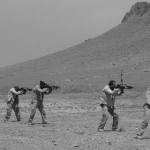Close Protection Threat and Risk Assessments
Close Protection Threat and Risk Assessments
Determining on-going specific threats, risk and vulnerabilities is a complex task. On one hand, a terrorist threat could be present and necessitate counter-measures in a country that is otherwise at a relatively low security state level. Conversely, there may be some countries at very high security levels that may not, at least in the short term, face a major terrorist threat.
Overall, the conduct of Risk Assessment processes will fall into one of three categories:
- General risk assessment – this involves the analysis of all the activities commonly undertaken, in this case, by the Principal as part of his/her job role. It will define overall risk, consequences of threat(s) materialising and likelihood of a threat happening (from intelligence information as well as from the current and historical political landscape).In this area of assessment mitigation of risk considerations would include:
- – Standard security operating procedures
- – Physical security measures
- – Training, vetting and appointment of designated security personnel
- Risk assessment of pre-planned events – assessment of any risks involved in a special event or activity as part of the planning process
- Dynamic risk assessment – this element should be constantly undertaken by designated security personnel/ Close Protection team ‘on-the-ground’ as the Principal carries out his/her role or potentially as a security situation unfolds.
Terrorist animosity towards international organisations/multinational companies/Westerners or Western interests in certain regions will be high. Alongside this the capacity of host governments to provide adequate protection will vary greatly.
When categorising security threat levels and the subsequent implementation of security Standard Operating Procedures (SOP’s) it may be appropriate to implement security arrangements based on the global/regional specific terrorist threat which can be quantified into a ‘traffic light’ threat level indicator where ‘green’ is considered negligible, ‘amber’ medium risk and ‘red’ high risk.
Countries at the ‘green’ risk level may not require additional resources above the baseline of security provision. However, those countries with risk levels at ‘amber’ or ‘red’ should be meeting the appropriate protective and procedural requirements and adjusting security allocations accordingly.





